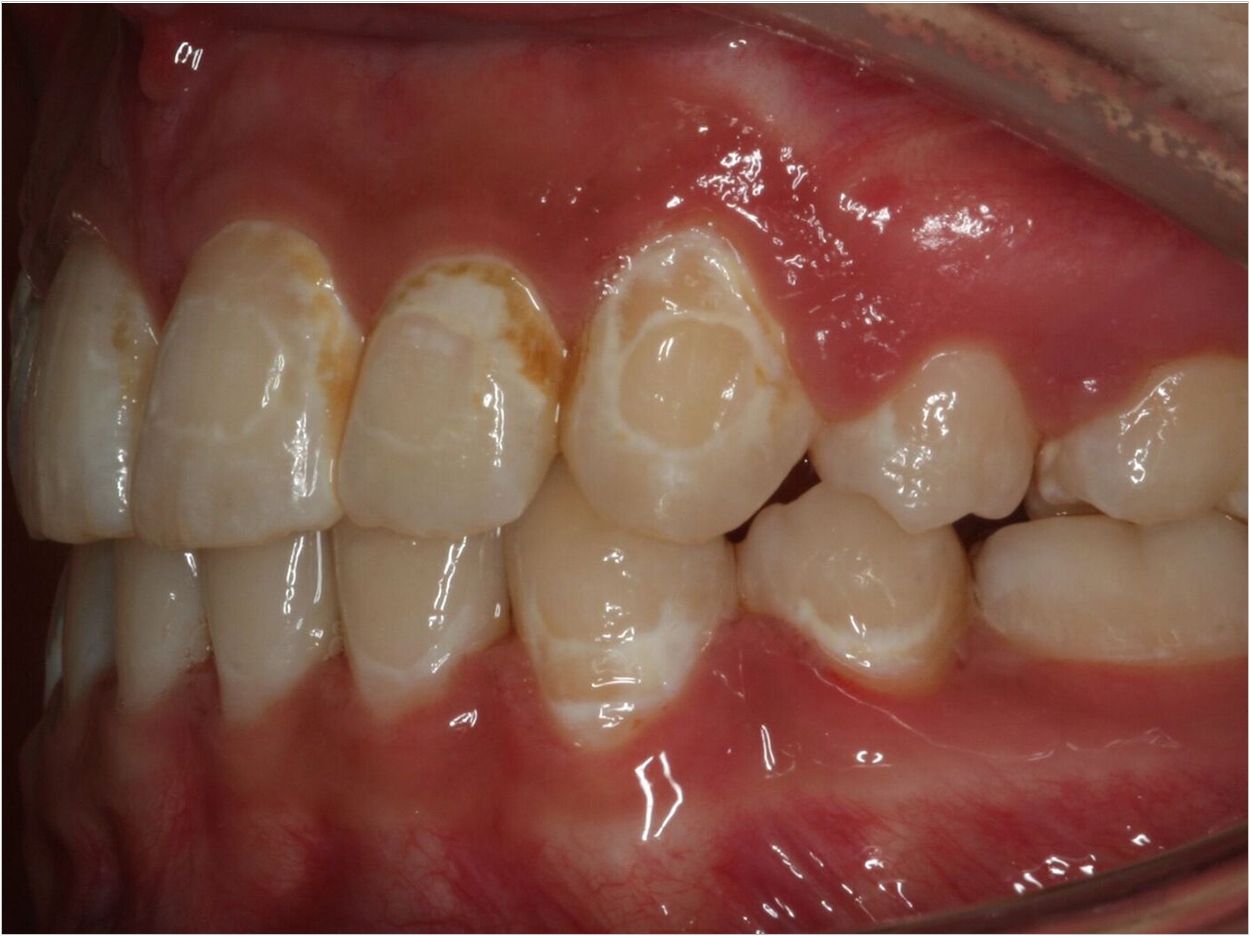
Researchers at Queen Mary University of London have produced a new orthodontic bracket bonding adhesive that protects the tooth surfaces around brackets from decay. Also known as white spot lesions, this decay affects nearly 70% of patients with orthodontic braces, according to a 2015 meta-analysis, the school reports.
The problem areas are around the edges of the retaining brackets where plaque accumulates. The wires and brackets make it difficult to keep the teeth clean, resulting in patients with straight teeth but blotchy marks after orthodontics that can affect their willingness to smile and reduce their self-confidence. This discoloration takes months or even years to disappear.
The new bioactive bonding adhesive differs from current materials by continuously releasing fluoride, calcium, and phosphate to form fluorapatite, which will remineralize adjacent tooth surfaces and reduce plaque formation around the bracket to reduce the risk of initial decay seen as a chalky surface on the tooth enamel.
“This is a significant breakthrough which will benefit all those wearing orthodontic braces,” said Robert Hill, MsC, PhD, research director and chair in dental physical sciences. “The research we undertook is an extension of the technology we developed with BioMin Technologies when developing BioMin F toothpaste, and this adhesive prevents the development of unsightly white spot lesions around the brackets.”
More than 4 million people wear braces in the United States, with 25% of these patients over the age of 18. In England and Wales, more than 200,000 children and adults started orthodontic treatment last year. According to the school, braces allow these patients to have an attractive, confident smile, bite correctly, eat more comfortably, and care for their teeth and gums more effectively.
“This new special adhesive includes a much lower sodium content than that used in BioMin F toothpastes, so it reacts, rather than dissolves. Our latest research shows the adhesive forms protective fluorapatite, the fluoride analog of tooth mineral, around the brackets. We hope to see the first commercially available product within two years,” said Hill.
The study, “Fluoride Containing Bioactive Glass Composite for Orthodontic Adhesives—Apatite Formation Properties,” was published by Dental Materials.
Related Articles
Silver Fights White Spot Lesions in Orthodontics
Startup’s Prototype Gel Regrows Enamel and Halts Decay
Remineralizing Material Boosts Toothpaste and Restorations












